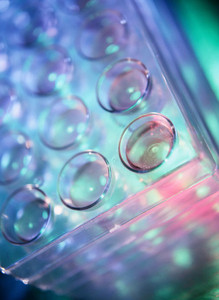Zarzio (Sandoz GmbH), a biosimilar recombinant human granulocyte colony-stimulating factor (filgrastim), was evaluated in healthy volunteers in four phase I studies and in neutropenic patients in a phase III study.
Phase I studies of a new biosimilar filgrastim product (Zarzio) published
Biosimilars/Research
|
Posted 04/06/2010
 0
Post your comment
0
Post your comment

The four phase I randomised, double-blind, cross-over, single or multiple dose studies enrolled 146 healthy volunteers (81 male and 65 female). Volunteers were treated with either Zarzio (Sandoz GmbH), or the reference product, Neupogen (Amgen GmbH), administered via both the SC and IV routes.
Pharmacodynamic analysis
The filagrastim-induced response was assessed in terms of the absolute neutrophil count (ANC), spanning the linear (1–10 mg/kg) portion of the dose-response curve, and CD34+ cells (dose range 2.5–10 mg/kg, after multiple dosing).
The mean ANC-time profiles were superimposable for all dose levels and routes. After SC injection, the ANC increase was reversible and returned to baseline levels ~48 hours after the last administration.
After seven days of SC administration, both products exhibited a clear dose-dependent response. The mean Zarzio area under the effect-time curve for ANC increased from 4.2 hours 106/mL for the 2.5 mg/kg group to 5.2 and to 6.5 hours 106/mL for the 5 and 10 mg/kg dose groups, respectively.
The CD34+ counts increased with increasing dose for both products with confidence intervals (CIs) well within the predefined equivalence boundaries.
Pharmacokinetic analysis
Both products showed similar pharmacokinetic characteristics. The 90% CIs for area under the curve from time of administration until the last scheduled blood sampling and maximum serum concentration fell well within the predefined bioequivalence limits of 80–125%.
The phase I studies demonstrated biosimilarity with respect to the pharmacokinetics and pharmacodynamics of various doses of Zarzio and the reference product, Neupogen (Amgen GmbH), in healthy volunteers, administered via both the SC and IV routes.
(link to Development of a new biosimilar filgrastim product (Zarzio) and Phase III study of a new biosimilar filgrastim product (Zarzio) published)
Reference:
Gascon P, Fuhr U, Sorgel F et al. Development of a new G-CSF product based on biosimilarity assessment. Ann Oncol. 2009 Dec 17. doi: 10.1093/annonc/mdp574
News
FDA approves six denosumab biosimilars
EMA recommends approval for four biosimilars targeting three therapies
General
Samsung Bioepis wins Pyzchiva case; Regeneron patent rulings threaten foreign biosimilars
Chinese biosimilars go global: growth, partnerships, and challenges
What is the future for the US biosimilar interchangeability designation

Biosimilars/Research Posted 05/06/2025
Biosimilar clinical efficacy studies: are they still necessary?

Biosimilars/Research Posted 27/05/2025
The best selling biotechnology drugs of 2008: the next biosimilars targets








Post your comment